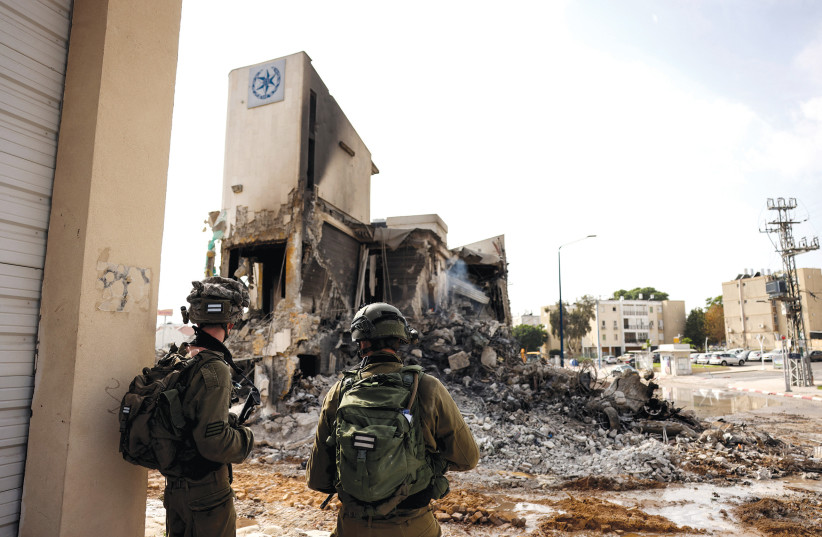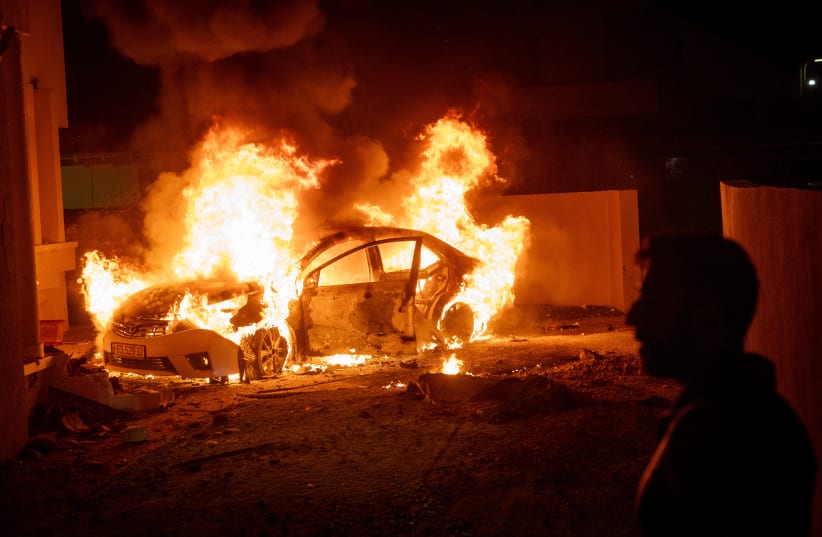In his speech in Israel on October 18, US President Joe Biden declared that the horrifying acts of murder and abuse that took place in the southern regions of Israel 11 days previously on a festival Shabbat morning are alarming and disturbing in their own right. However, for the State of Israel and Jews around the world, they carry an added layer of anguish, since, he claimed, they “bring to the surface painful memories and scars left by millennia of antisemitism and the genocide of the Jewish people.”
In the immediate wake of the vicious massacre of innocent civilians, including children and the elderly, a question has emerged in public discourse, laden with emotion and historical weight: Can these recent atrocities be compared to the Holocaust?
Can these recent atrocities be compared to the Holocaust?
As historians, who often engage in comparative analysis, we should address this question while analyzing the similarities and differences that define these two tragic events. Without delving into the gruesome details, there are clearly certain similarities and shared characteristics between the now-named “Black Shabbat Massacre” and the Holocaust. Even though Hamas is unable to replicate the scale of the Holocaust, one cannot ignore the numerous voices that rightly point to experiential elements and ideologies that exhibit similarities.
First and foremost, the victims’ experiences: The unimaginable agony of hours spent in hiding, the unfathomable cruelty inflicted upon innocent civilian victims, including women, babies, and handicapped persons, and the haunting images of the maimed and burnt bodies of those who were murdered are sadly common to both events. It is these parallels – the profound psychological and emotional toll of terror, helplessness, and anxiety – that give rise to associations with the Holocaust.
However, we must also acknowledge the stark differences that set these events apart. One key distinction lies in the scope of the atrocities. The Holocaust unfolded over years, systematically targeting Jewish communities across vast geographic areas of Europe and North Africa; while the horrors in the south of Israel were concentrated in a short time frame and limited geographically.


Another notable difference is the presence of armed Israeli fighters, both in uniform and not, who despite the overwhelming surprise attack, endeavored to help the civilian population during the Black Shabbat Massacre: families trapped in houses that had been set on fire, hundreds who escaped the Nova music festival that turned into a killing field, and more. Unfortunately, despite their heroic efforts, they did not always succeed in saving lives.
Nevertheless, this element significantly distinguishes itself from the relentless persecution of defenseless Jewish communities during the Holocaust. It is also important to note that whereas at the time of the Holocaust, Jews were a small minority, often surrounded by indifferent or hostile neighbors, the Black Shabbat Massacre was an attack against Israeli citizens living in the Jewish state, and neighbors – Jewish and non-Jewish alike – rushed in to try to help the victims.
ANOTHER IMPORTANT element that must be considered when comparing the Black Shabbat Massacre and the Holocaust is the ideological underpinning of these two dark chapters in history. Fundamentalist Islam, whether Shia or Sunni, differs from Nazism, but also shares certain characteristics with it. Both Nazism and fundamentalist Islam exhibit a social and political ideology – in Nazism, based on racist antisemitism, and in fundamentalist Islam, intertwined with religion – which identifies Jews/Israelis as a mortal enemy to be destroyed, disregarding accepted human norms and the moral restraints of the laws of war.
Both Nazism and fundamentalist Islam also falsely attribute collectively to their intended victims the cruelty and evil they themselves perpetrate, as a means to rationalize and justify their own murderous violence. This underscores the significant role of antisemitic ideology in shaping their worldviews.
The issue of information and knowledge about both tragedies also differs due to our digital age. Heartbreaking photographs and film clips depicting the horrors of the events that unfolded two weeks ago were published online – often by the perpetrators themselves – despite their unbearable content. They expose the cruelty and extensive physical, mental, and sexual abuse of these attacks. Nevertheless, despite this wealth of documentation, not everything is clear.
Entire families have vanished under unknown circumstances. Hundreds of young men and women were murdered in violent rampages whose details are still shrouded in fog, and the fate of hundreds of hostages remains uncertain. Yet, beyond understanding the details of their deaths, the sheer number of victims makes it challenging to try to capture the fullness of their lives.
Who were these individuals? What dreams did they hold? These men, women, and children weren’t murdered for their actions, but rather, as in the Holocaust, for their very existence.
One last difference between the two lies in the fact that the Holocaust ended a long time ago. We have no ability to change what happened during it, but only to try and learn from it in an attempt to better understand the identity, hopes, and dreams of its victims and the roots of the evil mindset of the perpetrators. We are still in the midst of the current event. While mourning the individuals and communities whose very lives were destroyed, the ongoing threat of Hamas must be eliminated, along with its murderous, fundamentalist ideology that stands at its core.
Our plea is threefold: effectively address the security concerns raised by these attacks, rescue the abductees, and prioritize the protection of innocent civilians. News reports must remain a beacon of accuracy, free from political or ideological agendas. For Israelis, unity is the call of the hour; for the free world, it is imperative to stand unequivocally against murderous radical forces.
While there will undoubtedly come a time for comparisons, reflections, healing, and questions, our immediate imperative is to stand united, steadfast in our resolve to confront and eradicate an evil that, like over 80 years ago, seeks to destroy Jews and threatens humanity itself.
The writer is a professor of history at the University of Tel Aviv and head of the Center for Research on the Holocaust in Poland at Yad Vashem.
